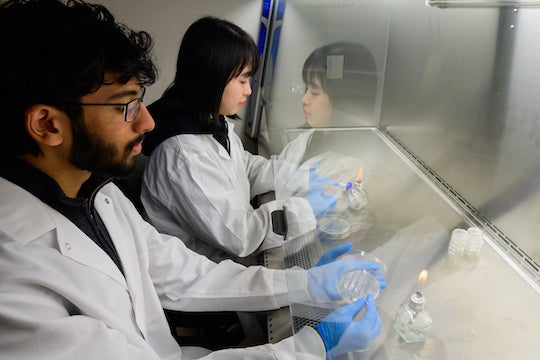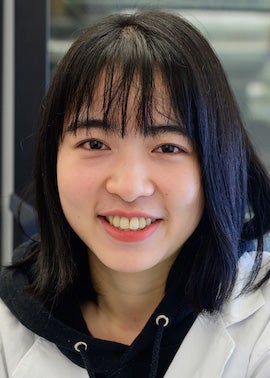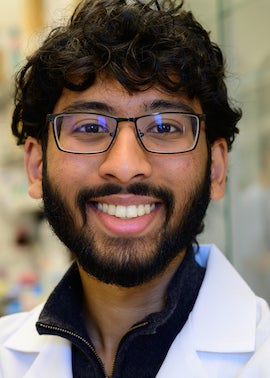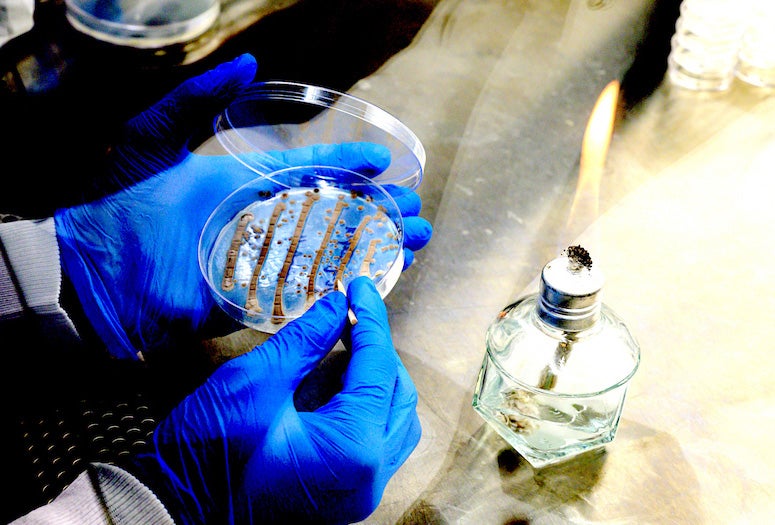Just as a choreographer’s notation tells a dancer to strike a particular pose, an enzyme newly discovered by Rice University scientists is able to tell specific molecules precisely how to arrange themselves, down to the angle of single hydrogen bonds.

Biomolecular engineers at Rice identified a new Diels-Alderase (DAase), an enzyme that catalyzes the Diels-Alder reaction, a widely used method of synthesizing important materials and pharmaceuticals, from raw materials for plastics and fuels to synthetic steroids.
The enzyme, known as CtdP, was previously thought to be a different type of protein — a “regulator” controlling for gene expression. Regulators typically do not serve a catalytic function, meaning they cannot “transform compound A into compound B,” said study co-author Xue Sherry Gao.
The precision of CtdP’s catalytic activity is notable. Gao’s team was able to pinpoint a minute difference in a molecule’s spatial structure — or stereochemistry — as directly caused by the newly identified enzyme. “Only when our DAase is added do you get that very specific stereochemistry,” Gao said. “This is very important, because a subtle change in the stereochemistry of a small molecule can spell the difference between a drug and a poison.”
The study is published in Nature Chemistry.

First described by Kurt Alder and Otto Diels in 1928, the Diels-Alder reaction generated a wide range of industrial and pharmaceutical applications, earning the two German chemists the Nobel Prize in chemistry in 1950.
Gao explained that the Diels-Alder reaction is “very useful because it can facilitate the formation of a wide range of cyclic ring structures” — characteristic features of many natural compounds that are medically useful. These bioactive natural products are found in microbes, plants and other organisms and can be used as drugs or as molecular blueprints for designing them.
Most Diels-Alder reactions, however, can be difficult to control with the precision required to achieve the desired 3D molecular structure. This is where the Gao lab’s CtdP discovery comes into play.
Knowing that a molecule’s stereochemistry can spell the difference between its behavior as a life-saving drug or as a lethal poison, Gao was curious how a fungal organism synthesized the 21R-citrinadin A molecule in only one of four possible configurations, or “stereochemical products.”
“Our question is, how does the living organism control the stereochemistry of this compound so precisely while achieving the same result through organic synthesis is so challenging?” she said.
CtdP turned out to be one of the answers. “Our enzyme ensures that the chemical reaction takes place with the desired stereochemical control,” she said.


(Photo by Jeff Fitlow/Rice University)
Enzymes expedite or render a chemical reaction more efficient, but they typically do not determine whether a reaction will occur or not. What sets CtdP apart from other DAases is that it uses a unique mechanism to prime the substrate substance while simultaneously converting nicotinamide adenine dinucleotide phosphate, or NADP+, into its reduced form, or NADPH, which makes the Diels-Alder reaction possible in the first place, Gao said. “In sum, our study reveals a new class of DAases,” she said.
“Very few DAases work like our enzyme and very strictly synthesize a chemical reaction that is impossible without it,” she said. “We hope that our discovery will help develop biocatalysts that enable the production of useful pharmaceuticals in the near future.”
Gao and collaborators used computational analysis, in vivo and in vitro testing and X-ray crystallography to determine the molecular structure and mechanisms underlying CtdP’s catalytic activity.
Gao, the T.N. Law Assistant Professor of Chemical and Biomolecular Engineering and an assistant professor of bioengineering and chemistry, is a 2022 recipient of a prestigious CAREER Award from the National Science Foundation.
The National Institutes of Health (GM138207, GM11810, AI41481, GM122218, GM132046, GM116961), the Robert A. Welch Foundation (C-1952) and the University of Michigan supported the research. Computational resources were supported by the National Science Foundation via the UCLA Institute for Digital Research and Education, the San Diego Supercomputing Center through XSEDE (1548562) and D.E. Shaw Research.
-30-
- Peer-reviewed paper:
-
“An NmrA-like enzyme-catalyzed redox-mediated Diels-Alder cycloaddition with anti-selectivity” | Nature Chemistry | DOI: 10.1038/s41557-022-01117-6
https://www.nature.com/articles/s41557-022-01117-6
Authors: Zhiwen Liu, Sebastian Rivera, Sean Newmister, Jacob Sanders, Qiuyue Nie, Shuai Liu, Fanglong Zhao, Joseph Ferrara, Hao-Wei Shih, Siddhant Patil, Weijun Xu, Mitchell Miller, George Phillips, Jr., K. N. Houk, David Sherman and Xue Gao - Image downloads:
-
https://news-network.rice.edu/news/files/2023/01/230118_CtdP_LG.jpg
CAPTION: A new Diels-Alderase, CtdP, uses a unique mechanism to prime the substrate substance while converting nicotinamide adenine dinucleotide phosphate, or NADP+, into its reduced form, or NADPH, enabling the Diels-Alder reaction, a widely used method of synthesizing important materials and pharmaceuticals. (Image courtesy of Gao lab/Rice University)https://news-network.rice.edu/news/files/2023/01/CtdP_researchers_LG.jpg
CAPTION: Researchers in the lab of Rice’s Xue Sherry Gao discovered a new class of Diels-Alderases.
(Photo by Jeff Fitlow/Rice University)
https://news-network.rice.edu/news/files/2023/01/Siddhant_Patil_GaoLab_LG.jpg
CAPTION: Siddhant Patil, a Rice undergraduate biosciences student and a member of the Gao lab, is a co-author on the study. (Photo by Jeff Fitlow/Rice University)https://news-network.rice.edu/news/files/2023/01/Qiuyue_Nie_GaoLab_LG.jpg
CAPTION: Qiuyue Nie, a Rice postdoctoral research associate in chemical and biomolecular engineering and a member of the Gao lab, is a co-author on the study. (Photo by Jeff Fitlow/Rice University)https://news-network.rice.edu/news/files/2023/01/CtdP_Bart_LG.jpg
CAPTION: A scientist works in the lab of Rice’s Xue Sherry Gao. (Photo by Jeff Fitlow/Rice University)
- Related stories:
-
Rice University scientists get fungi to spill their secrets:
https://news.rice.edu/news/2023/rice-university-scientists-get-fungi-spill-their-secrets
Xue Sherry Gao wins CAREER Award:
https://news.rice.edu/news/2022/xue-sherry-gao-wins-career-awardEnzyme from fungi shows molecules which way to turn:
https://news.rice.edu/news/2021/enzyme-fungi-shows-molecules-which-way-turnRNA-editing tool a fast, sensitive test for COVID-19:
https://news.rice.edu/news/2022/rna-editing-tool-fast-sensitive-test-covid-19Engineers enlist fungi to advance against disease:
https://news.rice.edu/news/2020/engineers-enlist-fungi-advance-against-disease - Links:
-
The Gao Laboratory: https://gaolab.rice.edu
Department of Chemical and Biomolecular Engineering: https://chbe.rice.edu/
Department of Chemistry: https://chemistry.rice.edu/George R. Brown School of Engineering: https://engineering.rice.edu
Bioscience Research Collaborative: https://brc.rice.edu/
- About Rice
-
Located on a 300-acre forested campus in Houston, Rice University is consistently ranked among the nation’s top 20 universities by U.S. News & World Report. Rice has highly respected schools of Architecture, Business, Continuing Studies, Engineering, Humanities, Music, Natural Sciences and Social Sciences and is home to the Baker Institute for Public Policy. With 4,240 undergraduates and 3,972 graduate students, Rice’s undergraduate student-to-faculty ratio is just under 6-to-1. Its residential college system builds close-knit communities and lifelong friendships, just one reason why Rice is ranked No. 1 for lots of race/class interaction and No. 1 for quality of life by the Princeton Review. Rice is also rated as a best value among private universities by Kiplinger’s Personal Finance.

